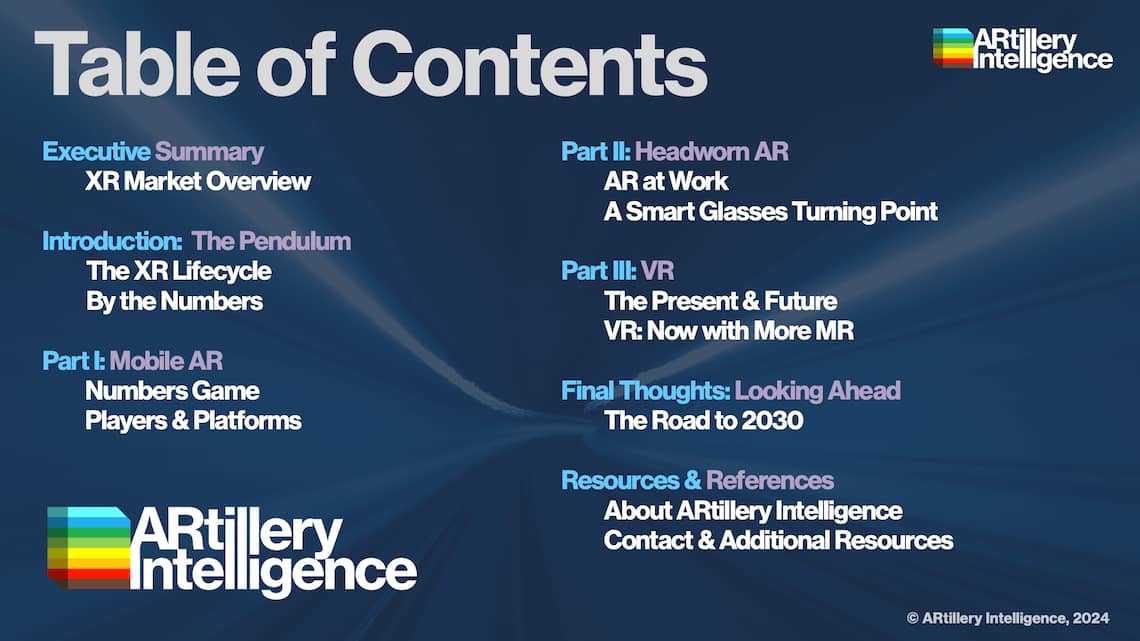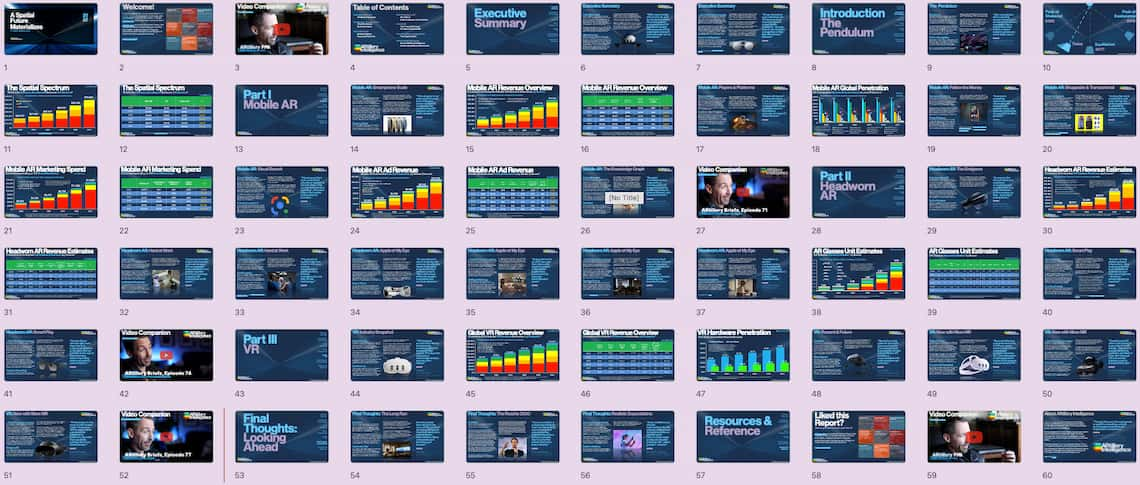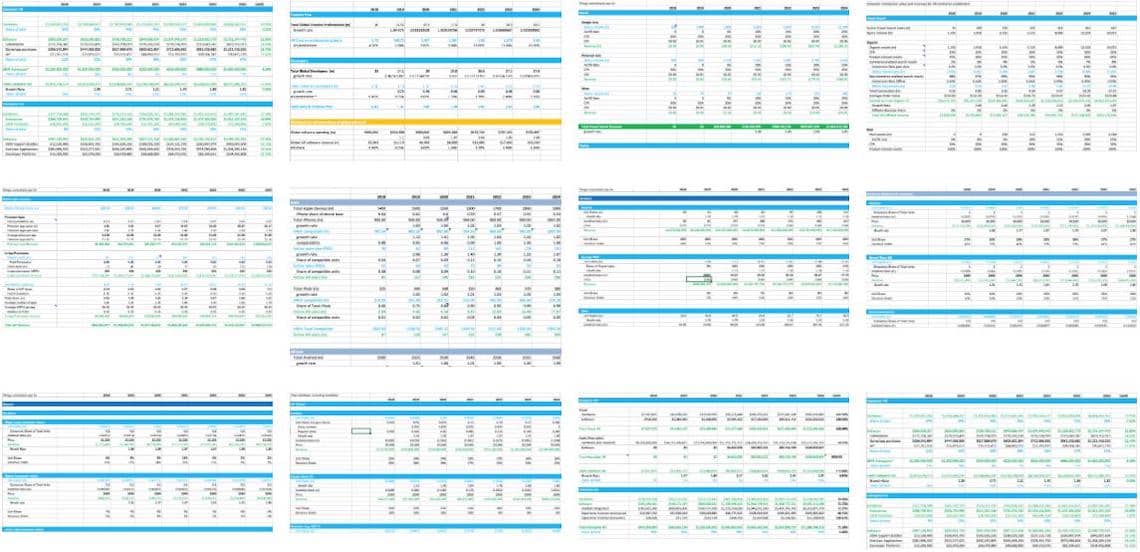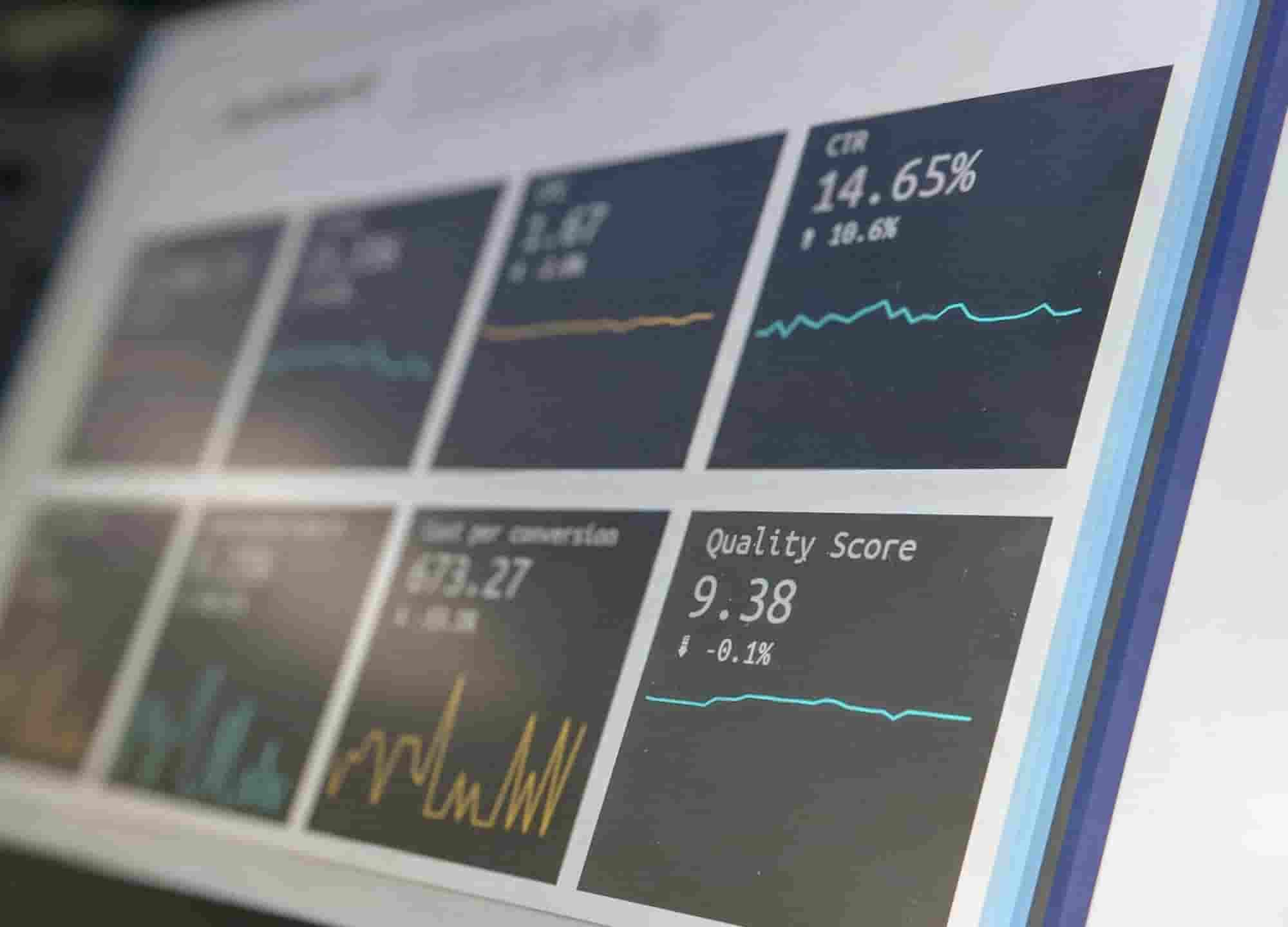
Spatial computing – including AR, VR, and other immersive tech – continues to alter the ways that we work, play, and live. But there have been ups and downs, characteristic of hype cycles. The pendulum has swung toward over-investment, then toward market correction – leaving us now in a middle ground of reset expectations and moderate growth.
Meanwhile, recent history has brought a few notable milestones in XR subcategories ranging from mixed reality (MR) to low-immersion smart glasses, to the sector’s new high-water mark: Apple Vision Pro.
Taking those factors one at a time, MR has been elevated to a new market standard in VR, thanks to Meta Quest 3. HD color passthrough cameras not only broaden VR use cases and user friendliness but they advance AR. In other words, AR can live on, and be incubated within, the more mature and penetrated VR hardware market. This exposes AR by seeding its demand with a broader set of new users. And that’s what Meta wants. Quest 3, among other things, is Meta’s bridge to its longer-term AR ambitions.
The same can be said for Ray-Ban Meta Smart glasses (RBMS), which accommodate style and wearability while the visual UX is toned down. Meta will approach the holy grail of all-day AR glasses from both directions – smart glasses and mixed-reality headsets – which will someday meet in the middle.
Meanwhile, RBMS sets the bar for smart glasses with an AI-powered UX whose appeal lies not in graphical dimensionality but relevant information delivery. We’re talking personal alerts, social signals, shopping & commerce, and AI-fueled object recognition.
That brings us to the big topic that’s defined the tech sector over the past year: AI. The rise of generative and conversational AI from the likes of OpenAI has characterized the technological zeitgeist. But the big question is how it intersects with XR. In short, XR can be the face of AI, while AI is the brains of XR.
For example, as we explored in a recent report, generative AI can aid in XR experience creation, thus automating and streamlining developer workflows. It can also transform user interfaces for XR devices ranging from smart glasses to mixed reality headsets. This is already seen in the AI object-recognition and personal-assistant functions of RBMS, as noted.
At the other end of the experiential spectrum, we have Apple Vision Pro. Shooting for the extent of what’s possible in spatial computing today, it could seed demand for XR by making it sexy and coveted from a mainstream perspective. This is a status that’s been elusive for AR and VR over the past decade.
This influence could take time, given Vision Pro’s price tag and long evolutionary path. But in the meantime, Apple could lift all boats through its signature “halo effect.” This unlocks opportunities for smaller players to meet XR’s elevated demands at lower price points.
Beyond user-facing products, a spatial tech stack lies beneath. This involves a cast of supporting parts. We’re talking processing muscle (Qualcomm), experience creation (Adobe), and developer platforms (Niantic). These are the engines of XR growth.
So how is all of this coming together? Where are we in spatial computing’s lifecycle? And where are there gaps in the value chain that signal opportunity for AR and VR players? We’ll tackle these questions and others in this report through numbers and narratives.



The fastest and most cost-efficient way to get access to this report is by subscribing to ARtillery PRO.
This report highlights ARtillery Intelligence viewpoints, gathered from its daily in-depth market coverage. To support narratives, data are cited throughout the report. These include ARtillery Intelligence’s original data, as well as that of third parties. Sources are linked or attributed in each case.
For market sizing and forecasting, ARtillery Intelligence follows disciplined best practices, developed and reinforced through its principles’ 18 years in tech-sector research and intelligence. This includes the past 8 years covering AR & VR exclusively, as seen in research reports and daily reporting.
This approach primarily applies a bottom-up forecasting analysis, secondarily vetted against a top-down analysis. Together, confidence is achieved through triangulating figures in a disciplined way. More about our methodology can be seen here, and market-sizing credentials can be seen here.



Unless specified in its stock ownership disclosures, ARtillery Intelligence has no financial stake in the companies mentioned in its reports. The production of this report likewise wasn’t commissioned. With all market sizing, ARtillery Intelligence remains independent of players and practitioners in the sectors it covers, thus mitigating bias in industry revenue calculations and projections. ARtillery Intelligence’s disclosures, stock ownership, and ethics policy can be seen in full here.
Checkout easily and securely.
Editor’s note: While most ARtillery Intelligence reports are available for individual purchase, this report is available exclusively for ARtillery Pro subscribers. Sign up here.

Ask us anything








